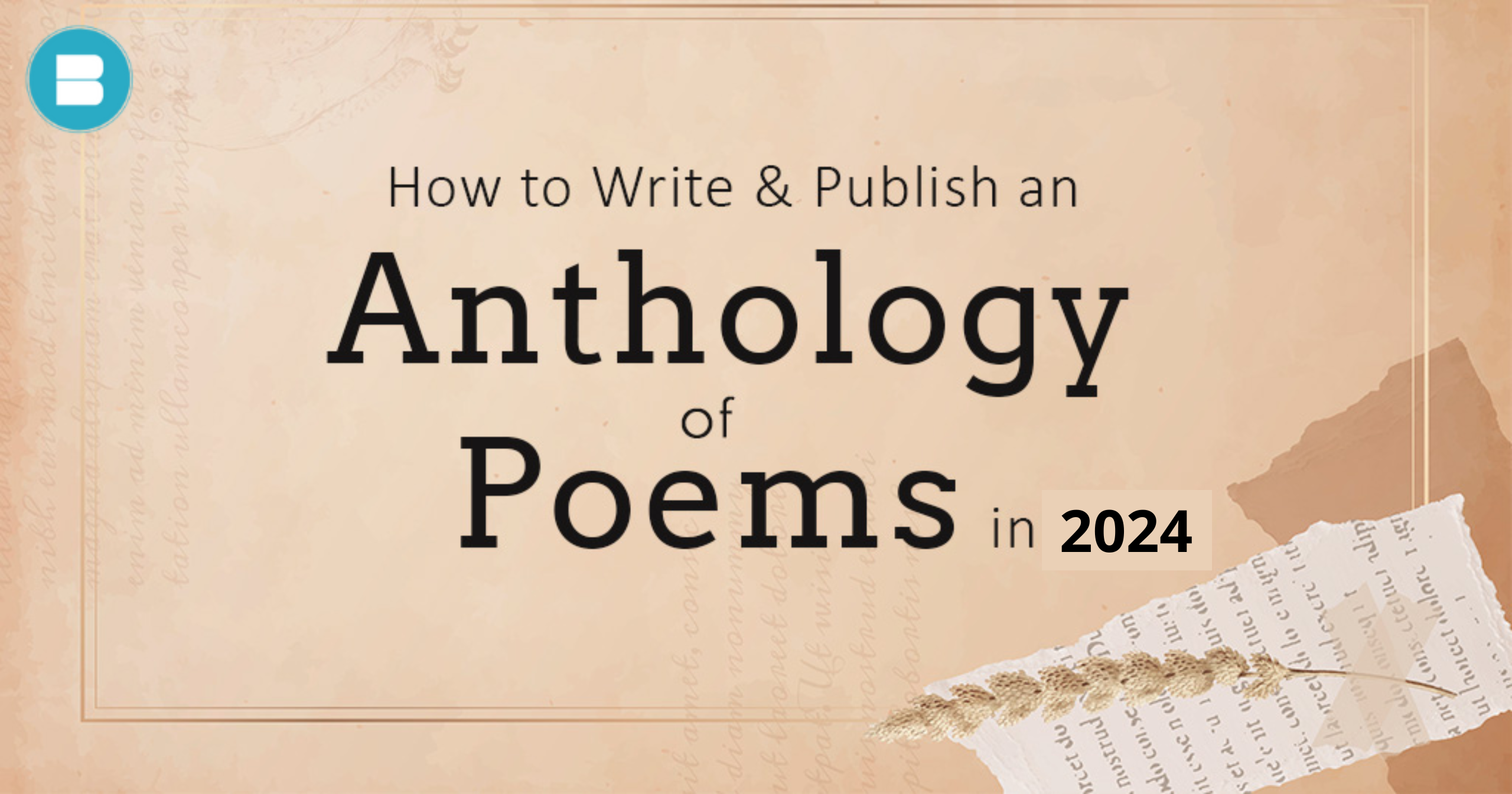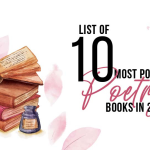Anthologies of poems are a wonderful way to showcase the diverse voices and talents of poets while providing readers with a collection of thought-provoking and evocative works. If you’re a poet or an editor interested in curating an anthology of poems in 2024, this blog post will guide you through the process of creating and publishing your anthology. From selecting poems to finding a publisher, let’s explore it step by step on how you can write & publish your effectively in 2024:
- Define the Theme and Purpose
- Call for Submissions
- Review and Selection
- Organise and Edit
- Seek a Publisher
- Design and Formatting
- Marketing and Promotion
- Distribution and Sales
- Celebrate and Engage
Step 1: Define the Theme and Purpose:
Defining the theme and purpose of your anthology is the first step in creating a cohesive and engaging collection of poems. Consider the type of anthology you want to create, whether it’s focused on a specific genre, theme, or a combination of diverse voices. This theme will serve as a guiding principle throughout the selection and editing processes. Think about the message you want to convey to your readers and the impact you want your anthology to have. A clear vision will help you curate a collection that resonates with your audience.
Step 2: Call for Submissions:
Once you have defined the theme, it’s time to issue a call for submissions. Spread the word about your anthology through various channels, such as social media platforms, writing communities, literary journals, and poetry organisations. Clearly outline the submission guidelines, including the deadline, formatting requirements, and any specific themes or criteria you are looking for. Encourage poets from diverse backgrounds and at different stages of their writing journey to submit their work. This will ensure a wide range of perspectives and styles in your anthology.
Step 3: Review and Selection:
As the submissions come in, it’s crucial to carefully review and select the poems that align with your anthology’s theme and desired quality. Consider diversity in terms of style, subject matter, and perspective to create a collection that reflects the richness of the poetic landscape. Read each submission with an open mind, appreciating the unique voice and perspective of each poet. Respect the rights of the poets by obtaining permission to include their work and properly crediting them in the anthology. Remember that the selection process may involve difficult choices, but aim for a collection that flows well and engages readers from start to finish.
Step 4: Organise and Edit:
Once you have a selection of poems, it’s time to organise them in a cohesive and meaningful order. Consider the flow of themes, emotions, or narratives throughout the anthology. You may want to create sections or chapters that group poems with similar themes or styles together. Pay attention to the rhythm and pacing of the anthology, ensuring a balance between different tones and moods. Edit the poems for clarity, grammar, and punctuation while respecting the individual voice and style of each poet. Collaborate with the poets to make any necessary revisions and ensure their work is presented authentically. As you edit, strive for a seamless reading experience that keeps readers engaged and immersed in the poetry.
Step 5: Seek a Publisher:
After the editing process, it’s time to seek a publisher for your anthology. Research publishers who specialise in poetry anthologies or those who align with the theme of your anthology. Look for publishers who have a track record of publishing similar works and who have a strong distribution network. Craft a well-crafted book proposal that includes a synopsis of your anthology, author bios of the poets included, sample poems, and a detailed marketing plan. Tailor your proposal to each publisher, highlighting why your anthology is unique and why it would appeal to readers. Be prepared for possible rejections, as the publishing industry can be competitive. If traditional publishing avenues don’t work out, consider self-publishing as an alternative. Self-publishing provides greater control over the process, allowing you to make decisions regarding design, distribution, and marketing. BlueRoseONE, Amazon KDP, and many more platforms helps you to reach your dream in a much simpler and affordable manner.
Step 6: Design and Formatting:
If you choose to self-publish, designing and formatting your anthology is crucial to its success. Consider hiring a professional book designer who specialises in poetry collections or learning to create an aesthetically pleasing layout yourself. Pay attention to font selection, spacing, and overall visual appeal. Ensure that the formatting is consistent throughout the anthology and that the poems are presented in a reader-friendly manner. A visually appealing and well-designed anthology will enhance the reading experience and draw readers in.
Step 7: Marketing and Promotion:
Develop a comprehensive marketing plan to create awareness and generate interest in your anthology. Utilise social media platforms, author websites, and poetry communities to connect with readers and fellow poets. Create a dedicated website or landing page for your anthology where readers can find information about the book, the poets included, and purchase options. Organise book launches, poetry readings, or virtual events to engage your target audience and create a buzz around your anthology. Collaborate with the poets from the anthology to collectively promote the book, cross-promoting each other’s work and reaching a wider audience. Leverage reviews, endorsements, and testimonials from respected figures in the poetry community to build credibility and attract readers.
Step 8: Distribution and Sales:
Decide on the distribution channels for your anthology, taking into consideration the preferences of your target audience. Explore options like online platforms, independent bookstores, and direct sales through your website. Consider utilising print-on-demand services, which allow for efficient printing and shipping of books as they are ordered, minimising costs and inventory management. Offer your anthology in different formats, such as paperback, hardcover, and e-book, to cater to readers’ preferences. Monitor sales and reviews, and adapt your marketing strategy accordingly to optimise distribution and maximise sales.
Step 9: Celebrate and Engage:
Once your anthology is published, take the time to celebrate your accomplishment and express gratitude to the poets who contributed. Organise a launch event or gathering to celebrate the release of the anthology and thank the poets publicly. Engage with readers by participating in literary festivals, organising poetry readings, and seeking opportunities for discussions or panels centred around your anthology. Foster a sense of community by interacting with readers and fellow poets through social media, newsletters, and online forums. Encourage readers to leave reviews and provide feedback, and use this feedback to improve future editions or publications. By nurturing a supportive community and engaging with readers, you can cultivate ongoing support and create a lasting impact with your anthology.
Publishing an anthology of poems in 2024 can be an exciting and rewarding journey. Through careful selection, thoughtful editing, and effective promotion, you can create a collection of poems that resonates with readers and highlights the beauty of poetry. Remember to embrace diversity, respect the rights of the poets, and collaborate with fellow poets and professionals to bring your anthology to life. So, start curating and crafting your anthology, and let the power of poetry inspire and captivate readers in 2024 and beyond.
Publish your book for free with BlueRoseONE and become a bestselling author. Don’t let your dream of becoming an author fade away, grab the opportunity now and publish your book – be it fiction, non fiction, poetry or more.














